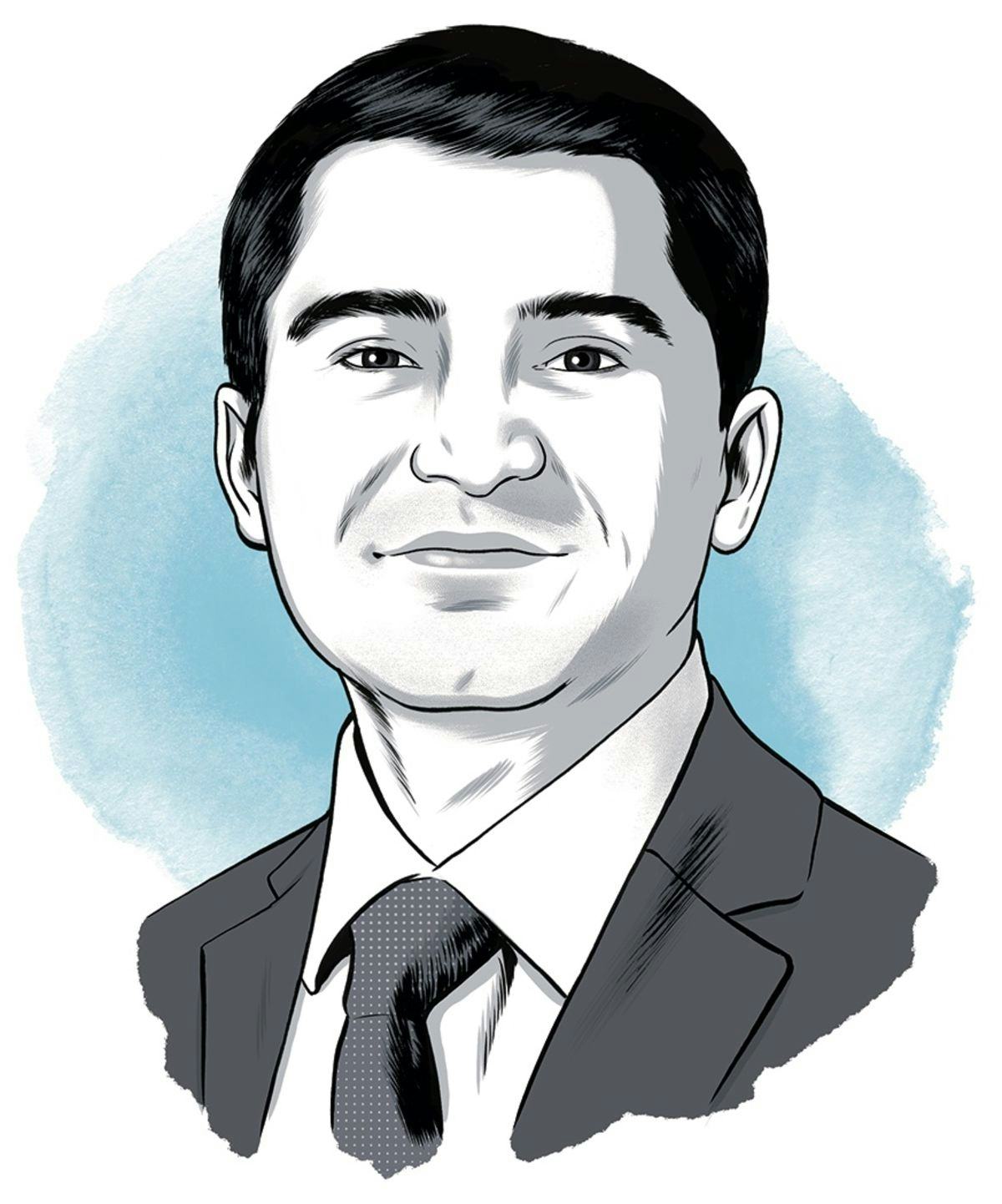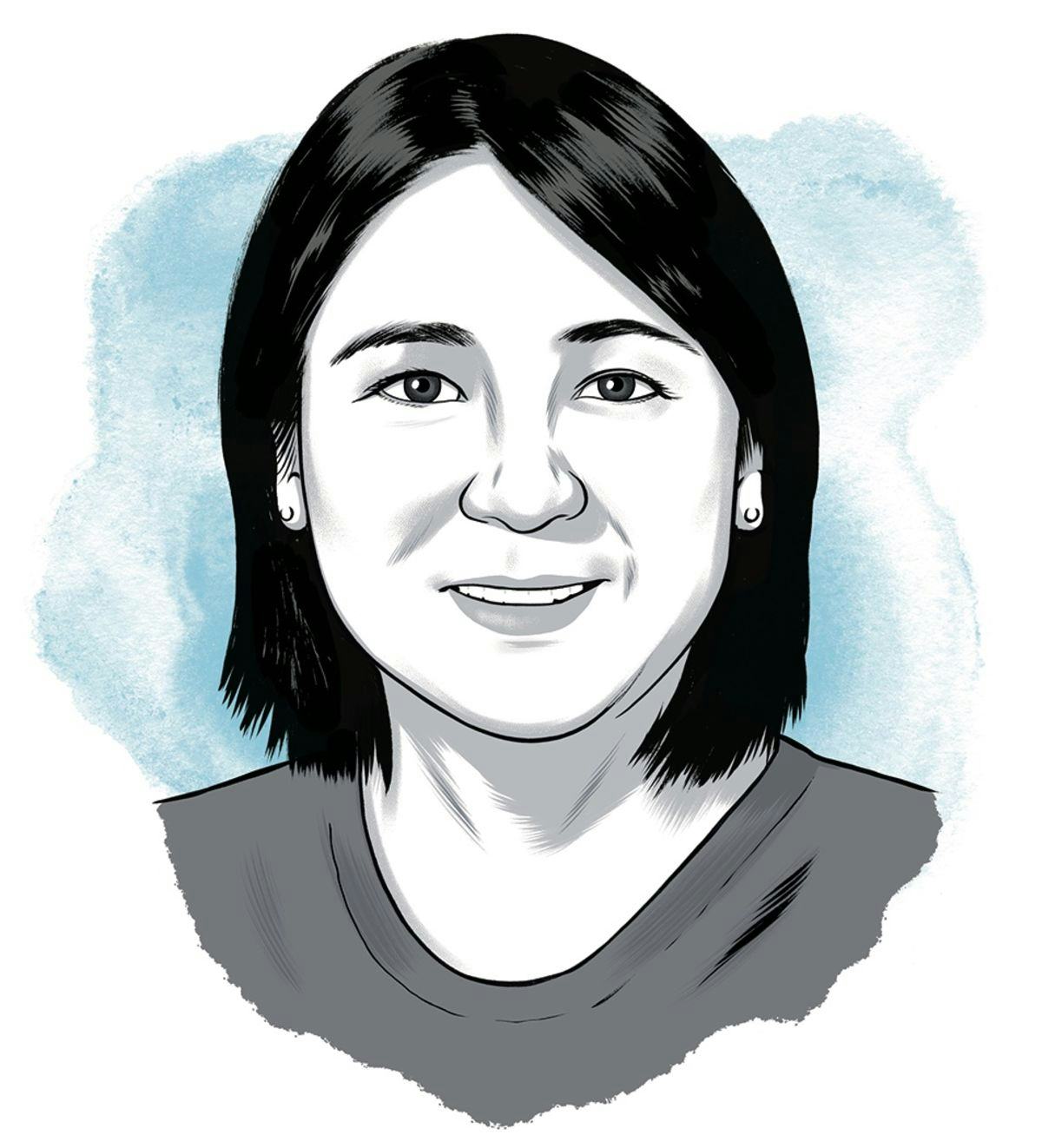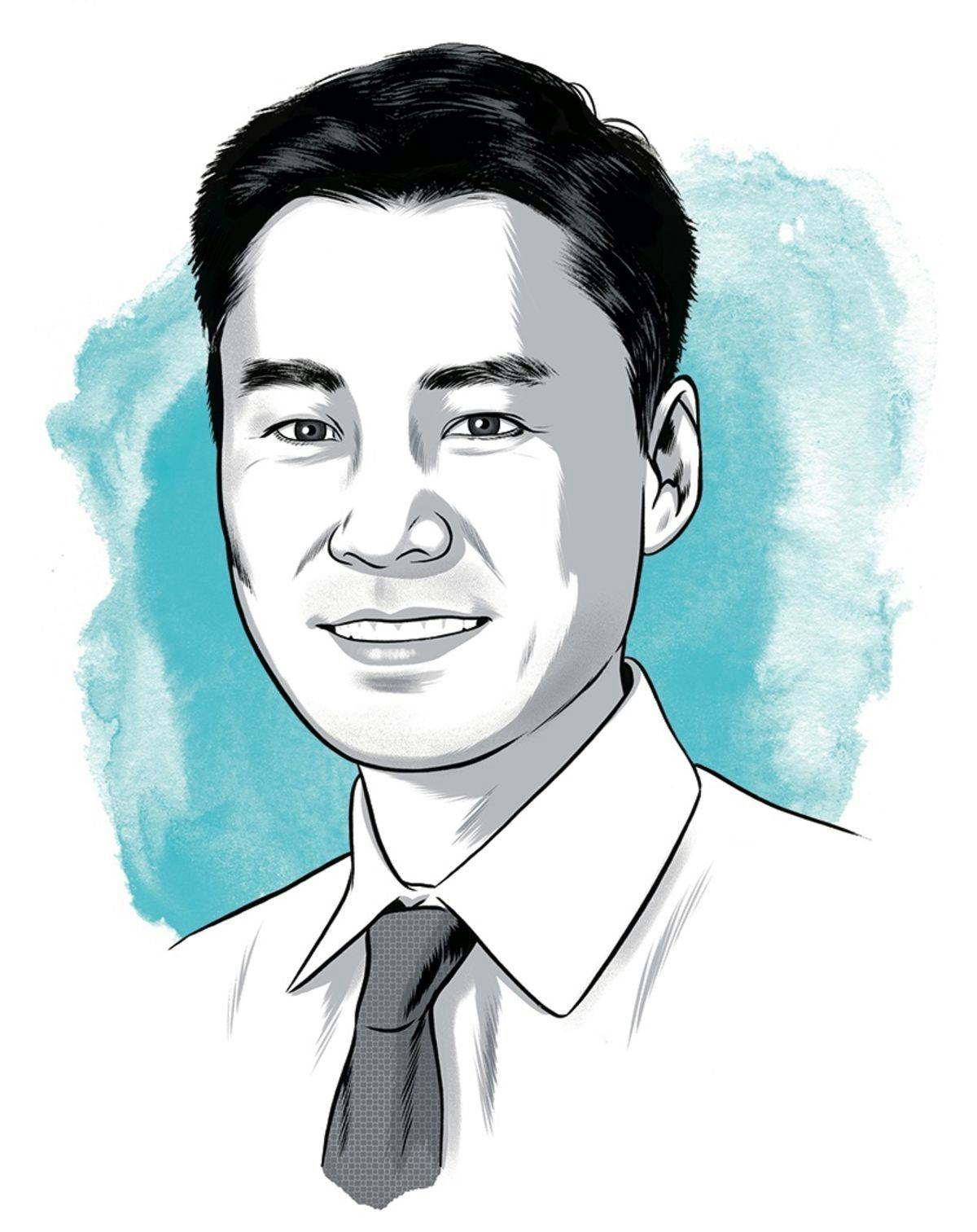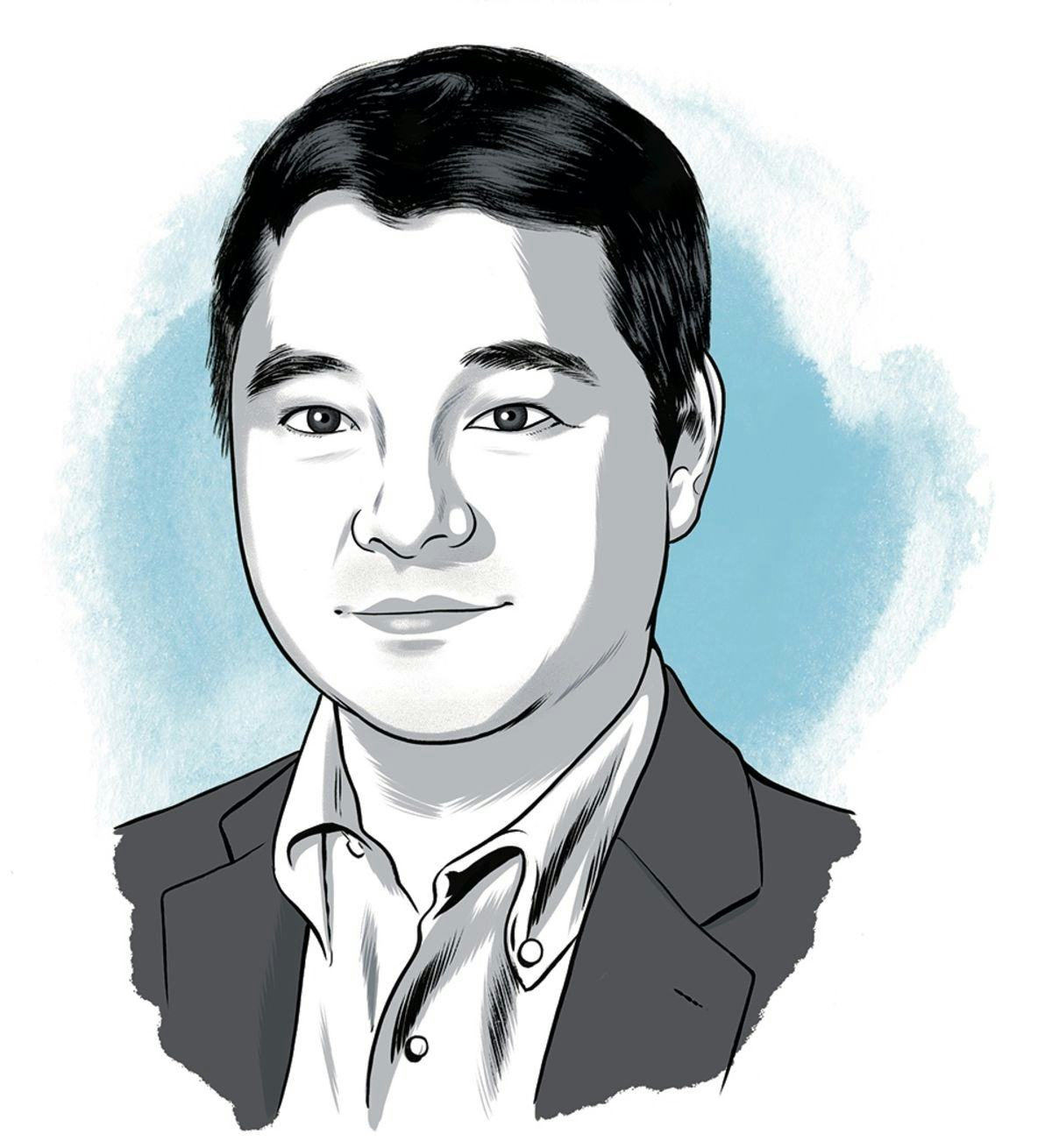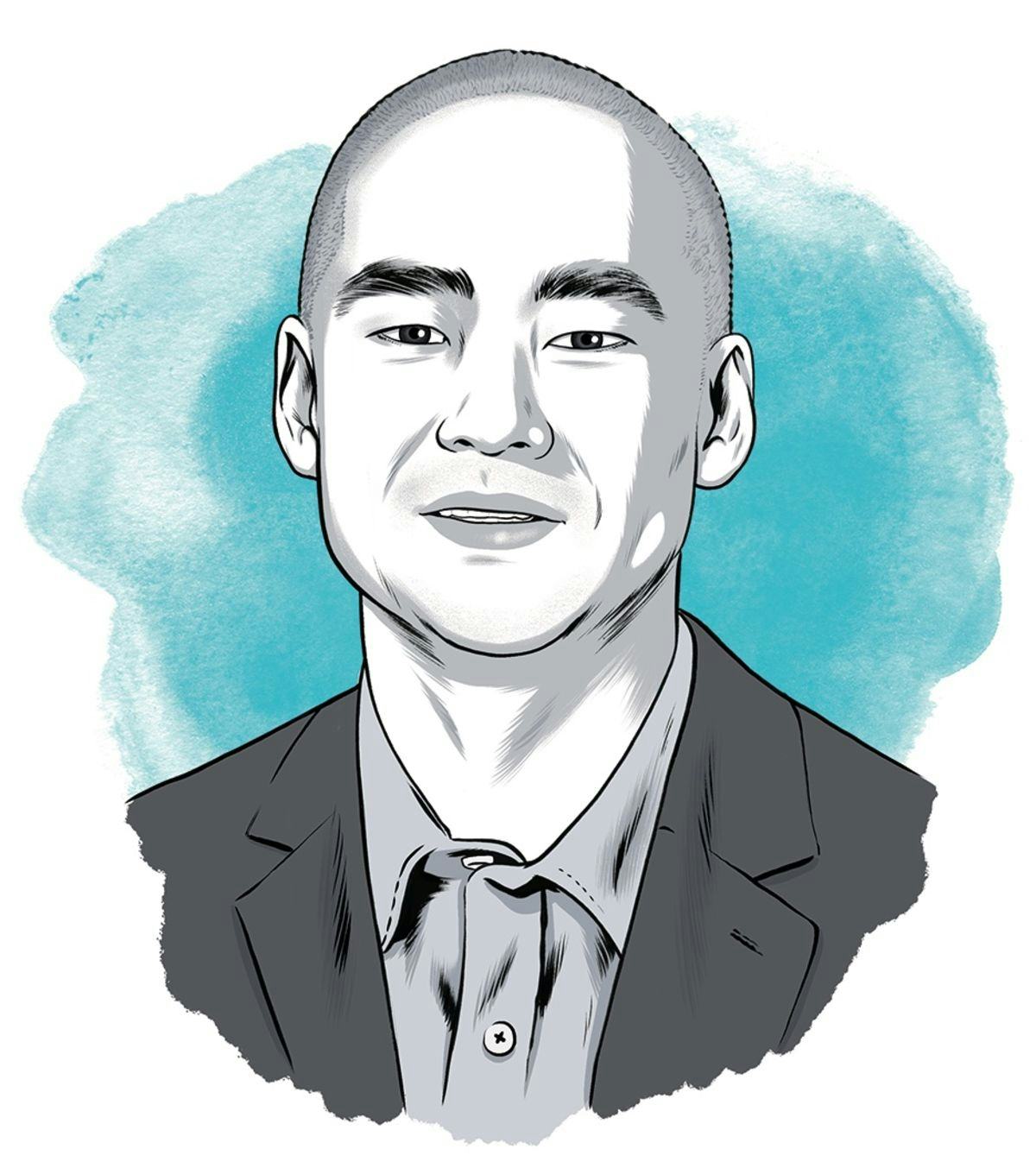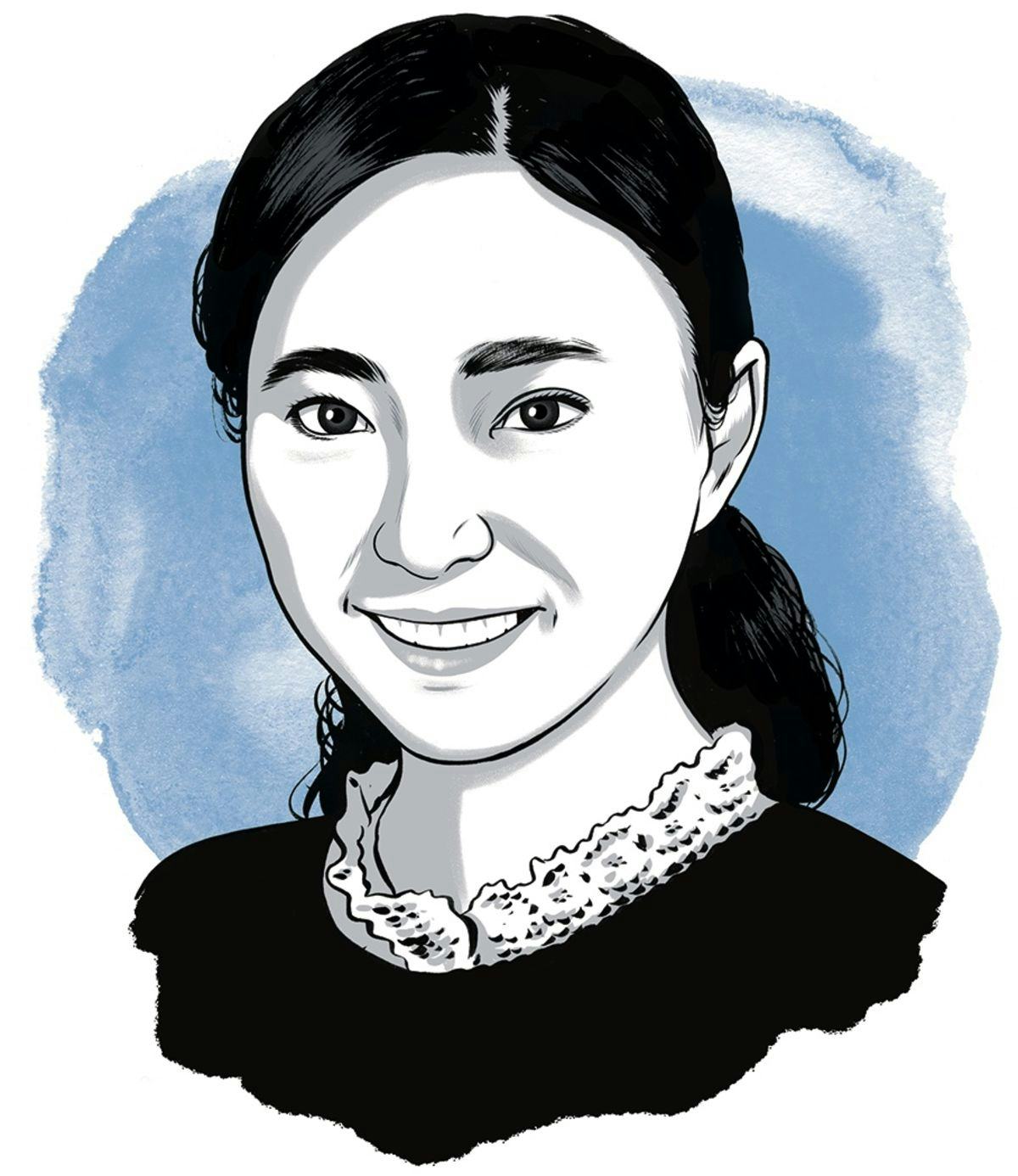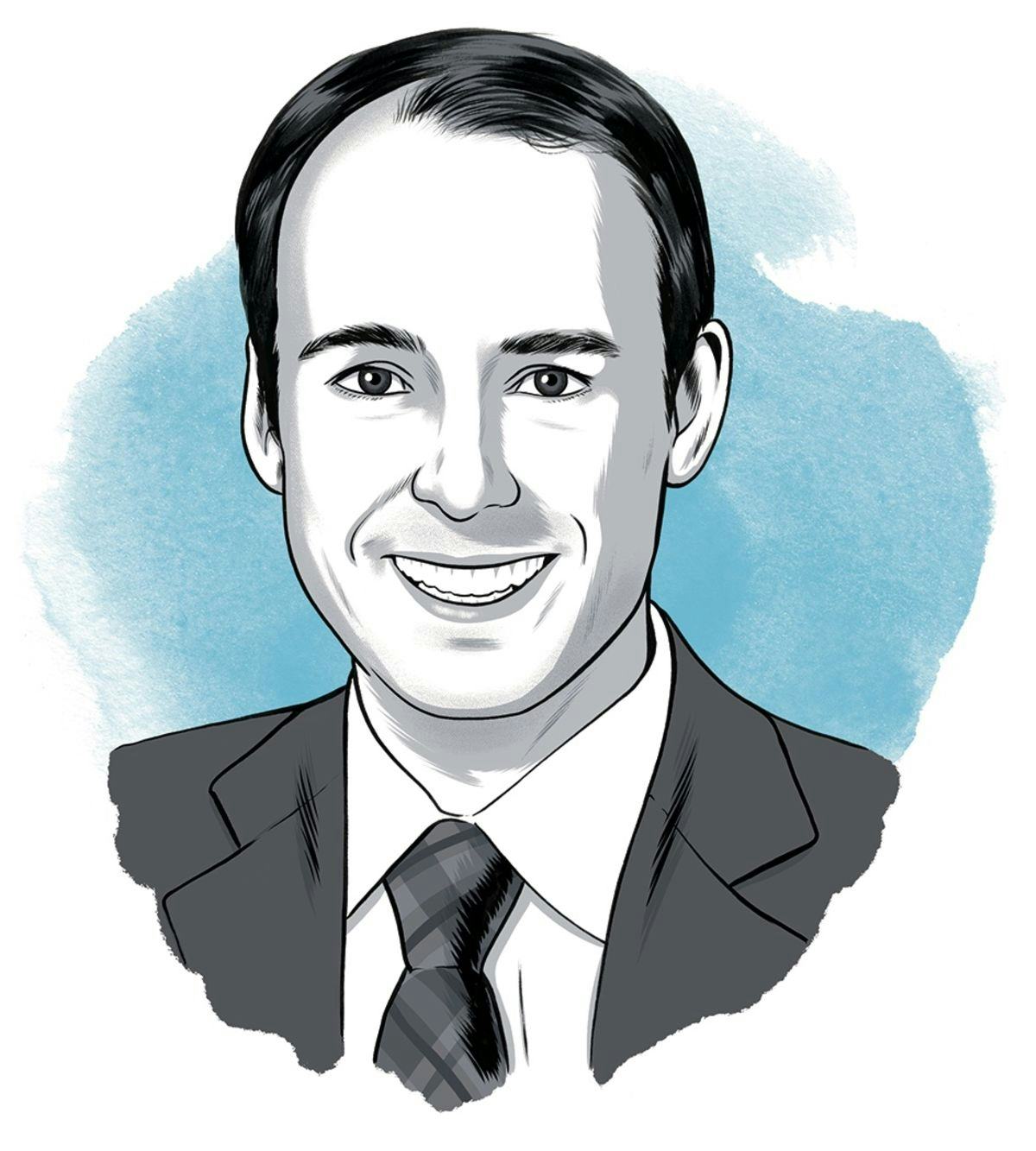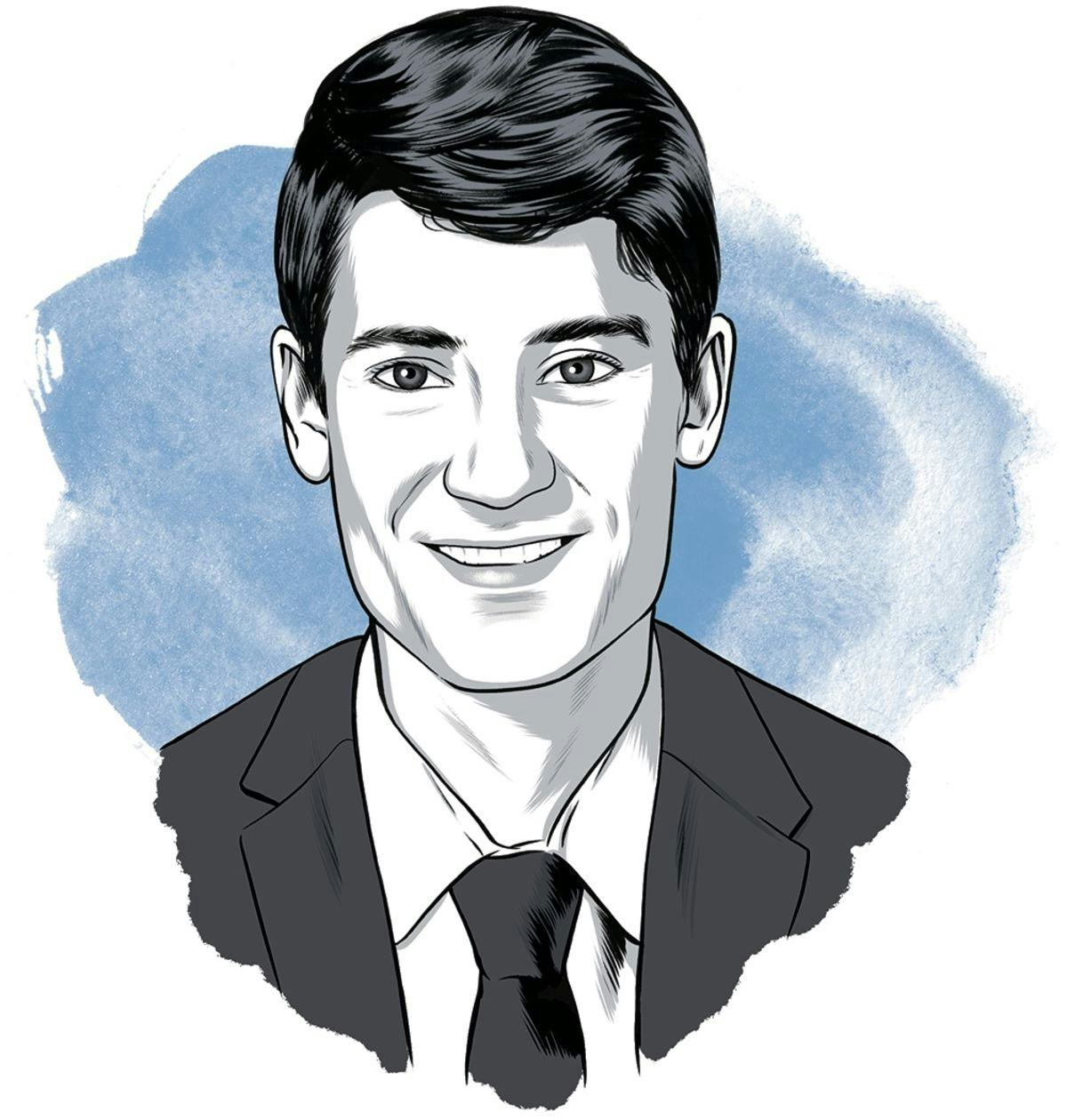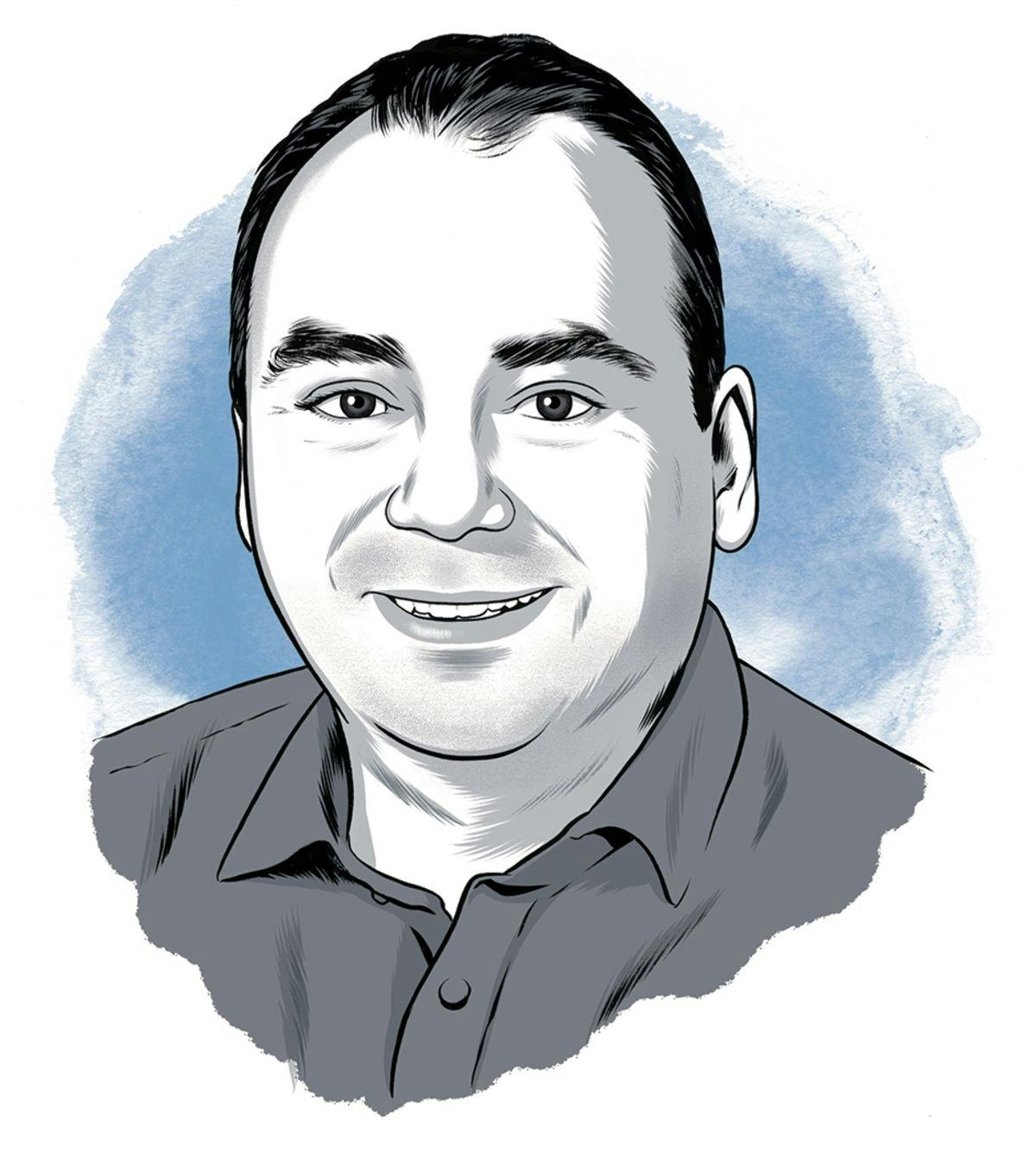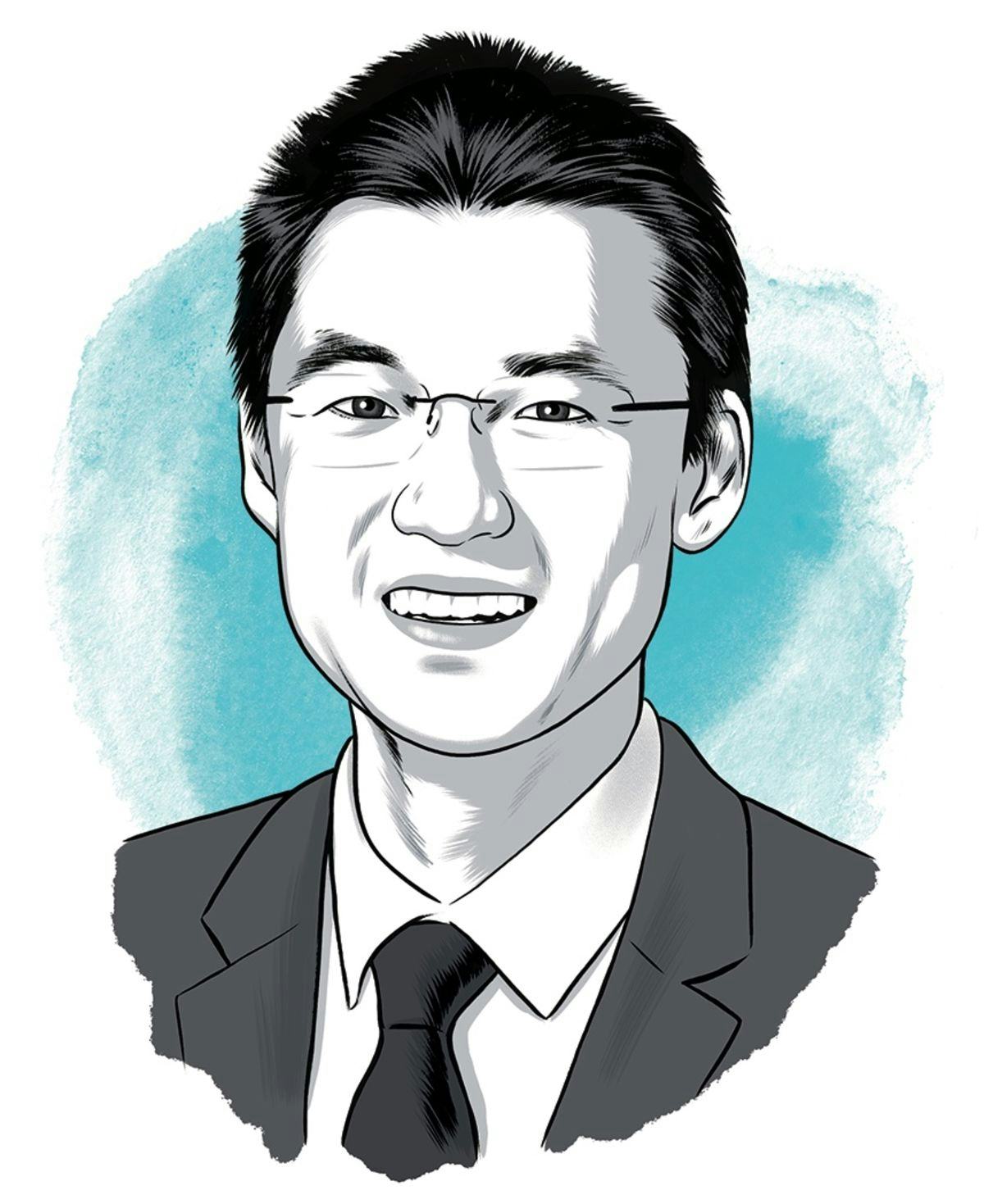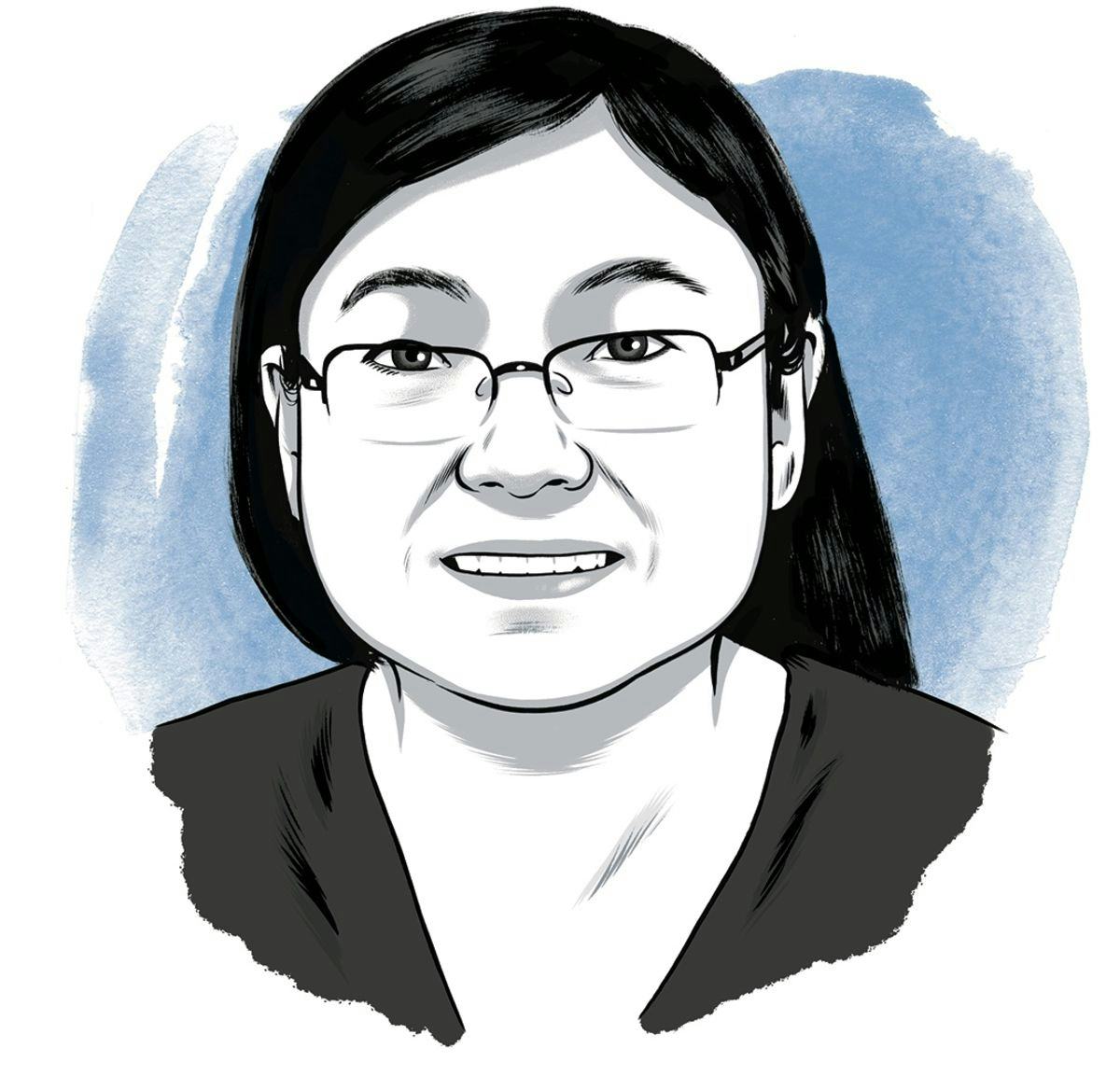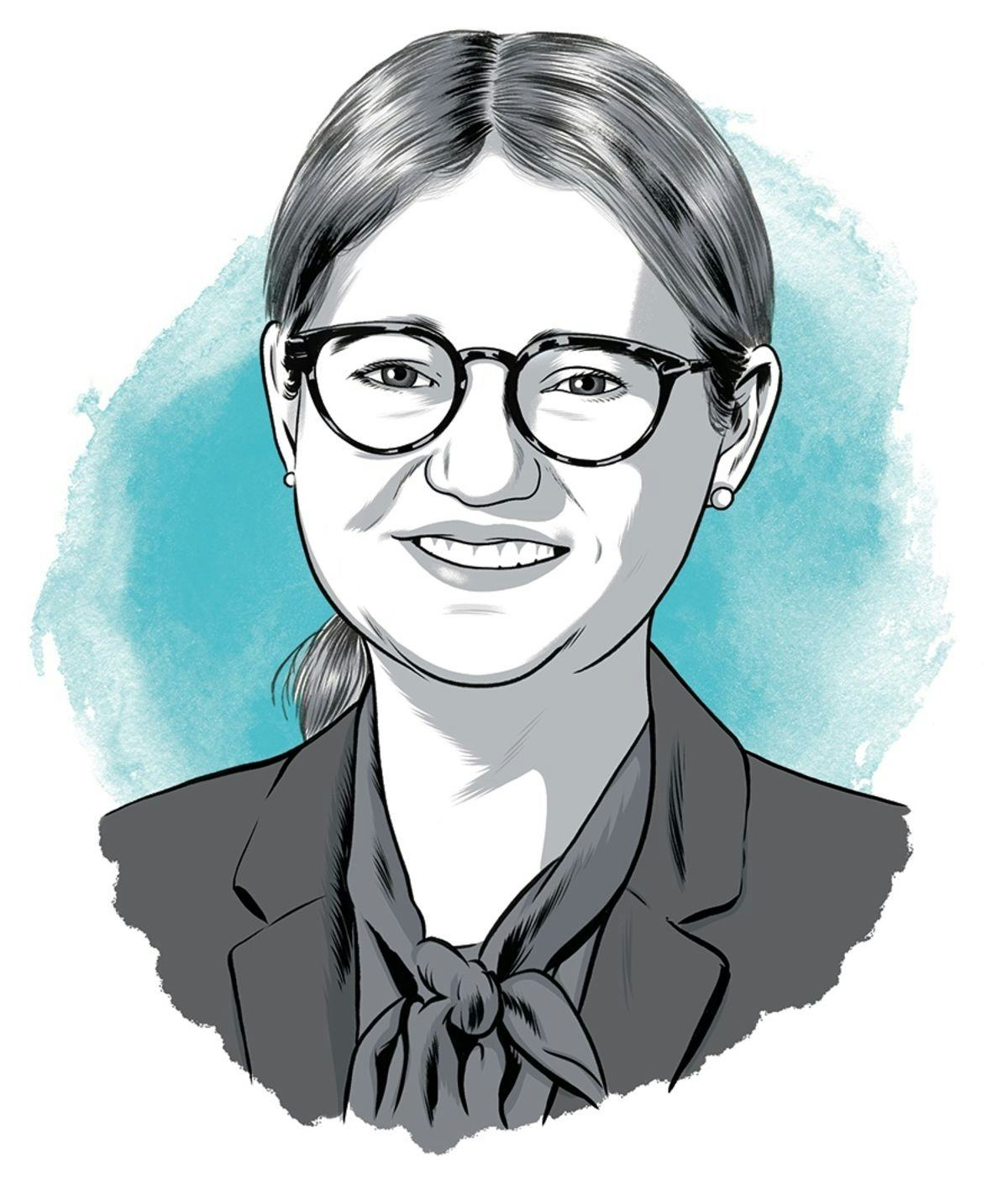The Young Investigators
In recent years, Stevens professors have received a multitude of research awards. Here are 12 of some of our most promising young researchers who have recently received prestigious honors and funding from top government and corporate partners for their research that will better society and the world, in diverse areas from human health and software security to climate study and space exploration.
Illustrations: Joel Kimmel
Abhishek Sharma
Assistant Professor, Chemistry and Chemical Biology
Research Area: Medicinal/organic chemistry and drug discovery
Funding Sources: NIH, DOD
The overarching goal of my lab is the design and development of novel-molecular reactivity and molecular function to accelerate the discovery of new therapeutics. The emergence of resistance to chemotherapeutic drugs is a prominent challenge in the treatment of cancer as well as bacterial infections. My research is focused on addressing these challenges using a synergistic interplay of medicinal chemistry, organic synthesis, computational chemistry and chemical biology. By gaining a molecular-level understanding of the role of therapeutically important proteins, this work will open up new avenues to tackle biomedical challenges like drug-resistant cancer.
Lu Xiao
Assistant Professor, School of Systems and Enterprises
Research Area: System and software engineering
Funding Source: NSF
My project leverages modern AI techniques to identify, manage and address real-life software performance issues more efficiently and systematically by focusing on architectural optimization. This research will contribute a set of transforming techniques for software performance engineering and generate valuable empirical experience regarding how real-life performance issues are caused and resolved. My research will have transforming impacts on the practice, education and research in software engineering, which in turn will generate far-reaching broader impacts by contributing novel techniques and tools to reduce development costs and ensure software quality throughout a project’s life cycle.
Jinho Kim
Assistant Professor, Biomedical Engineering
Research Area: Bioengineering technologies
Funding Sources: NSF, NIH, New Jersey Health Foundation Innovation Grant
My research group is taking a multi-disciplinary approach to gain insights into lung function and tissue damage. By combining tissue engineering, biosensing and microfluidic technologies, we aim to understand the underlying mechanisms of how tissue damage contributes to disruptions in lung function. This information helps us to explore possible regenerative medicine methodologies that could be used to repair damaged tissues and find new ways to improve lung health and function in individuals who have suffered from lung damage or disease.
Jae Chul Kim
Assistant Professor, Chemical Engineering and Materials Science
Research Area: Energy storage, solid-state chemistry and electrochemistry
Funding Sources: DOE, Army, Samsung, American Chemical Society
My research centers on solid-state chemistry to establish materials design principles and synthesis guidelines to develop energy storage technology. Specifically, I am interested in looking at how different chemistries interact and react in diverse length scales ranging from a few nanometers to hundreds of micrometers. Energy storage is key to the sustainable energy future. Modern technology is built on energy storage and will continue to do so in future technologies.
Yanghyo (Rod) Kim
Assistant Professor, Electrical and Computer Engineering
Research Area: Integrated circuits and systems
Funding Sources: NSF, DARPA, NASA
Our group develops highly scalable, interconnected solutions that can survive harsh conditions such as hot/cold temperatures and radiation in space. We exploit the millimeter-wave and terahertz spectrum to overcome these obstacles and continue advancing state-of-the-art technology. Our research significantly enhances the performance of scientific instruments and future spacecraft that are essential for space exploration and new scientific discovery.
Annie Xian Zhang
Assistant Professor, Mechanical Engineering
Research Area: Nanotechnology, thermal science
Funding Source: NSF
My research investigates how “twisting” two sheets of two-dimensional (2D) materials can alter their thermal transport properties and using this twisting method to push the extremes of thermal modulation in wearable devices. That twisting makes various Moiré patterns — the interference patterns that show up when superimposing one atomic thin periodic crystal lattice on top of another. The relative angle of that twist changes the pattern and influences the physical properties of the 2D materials due to the change in the interlayer lattice interactions. The knowledge learned will potentially push the thermal modulation extremes in skin-like wearable devices and enable modern devices from beyond-Si electronics and sensors to superconducting thermal switches.
Paul Grogan
Associate Professor, School of Systems and Enterprises
Research Area: Collaborative system design
Funding Sources: NSF, NASA
My research investigates how collaborative space missions across government and commercial partners could improve observation of convective precipitation. It develops simulation models of future satellite constellations to estimate where and when observations are possible and overlays this data on a two-year simulated environmental model. Knowing when and where to collect observations will ultimately improve our knowledge of the earth system and devise evidence-based policies to guard against climate/environmental threats.
Steven Hoffenson
Assistant Professor, School of Systems and Enterprises
Research Area: Sustainable design methods and complex systems simulation
Funding Sources: NSF, DOD, Con Edison
Through the NSF CAREER grant, my team investigates a new way to address sustainability in product design. By designing products with multiple perspectives and long-term impacts in mind, companies can be more profitable, consumers can get better products and environmental and social well-being will improve. My project uses tools and techniques from systems engineering and engineering design research to develop a holistic approach to sustainable design that could be used in a variety of disciplines and accounts for all life cycle phases, stakeholders and sustainability outcomes. This approach is expected to lead to more comprehensive and ubiquitous sustainable design practices, as well as policies that influence long-term environmental, social and economic sustainability.
Georgios Portokalidis
Associate Professor, Computer Science
Research Area: Software systems and security
Funding Sources: NSF, DARPA
My research aims to develop technologies that leverage debugging extensions already present on modern processors to communicate data securely and efficiently between applications and decoupled monitors. Such extensions are offered both by ARM (CoreSight) and Intel (Processor Trace), and we have developed an architecture for exporting appropriate abstractions for utilizing them. By building on the popular LLVM compiler framework, we have already realized heavy-weight RMs (reference monitors) for detecting memory errors. The findings of this project will lead to efficient co-processors that improve the security and trustworthiness of software systems.
Shang Wang
Assistant Professor, Biomedical Engineering
Research Area: Biophotonics
Funding Source: NIH
We develop new optical imaging methods to study biological processes that have been difficult or impossible to approach with traditional methods. In particular, we focus on the early developmental process of the heart and the brain, and we are developing a multi-contrast imaging platform to enable the study of how specific biochemical and biophysical factors regulate the formation and remodeling of the early heart and brain. Understanding the process of biological development is fundamental for biomedicine; it is directly linked to the understanding of congenital defects, and it also contributes critical insights to other biomedical fields, such as cancer and regenerative medicine.
Ying Wang
Associate Professor, School of Systems and Enterprises
Research Area: Cybersecurity, 5G, NextG, wireless communications, software engineering, health informatics
Funding Sources: DARPA, DOD, Defense Logistics Agency (DLA)
My current research is focused on enhancing cybersecurity assurance and system resilience for 5G and NextG infrastructures. Aiming at identifying and assessing risk factors associated with these infrastructures while ensuring sufficient automation, scalability and usability, we have developed a systematic approach that enables us to reason, detect and mitigate vulnerabilities and unintended emergent behaviors effectively. This approach is designed to respond to activated attacks in real-time and generate synthetic knowledge that can provide valuable insights for back-end architects and security engineers to develop further strategies. It provides assurance and security for large-scale public safety infrastructures, private networks and national carriers, thereby accelerating the development of FutureG technologies.
Kathrin Smetana
Assistant Professor, Mathematical Sciences
Research Area: Probabilistic numerical analysis and scientific computing
Funding Sources: NSF, Dutch Research Council (NWO)
The goal of my NSF CAREER project is to design and analyze multiscale methods for the simulation of deformations of (realistic) wind turbines, thus supporting the generation of renewable energy for society. As wind turbines are made from composite materials, the deformation of the former is a process that happens at multiple scales, from the scale of about one millimeter to the scale of the length of a blade of the wind turbine. While a direct numerical simulation is often too expensive for such multi-scale phenomena, multi-scale methods can take them into account and thus are able to yield an accurate prediction.
— Reported by Gabriela Harrod


